Magnesium sulfate, commonly known as Epsom salt is a mineral compound recommended for use in gardening due to its possible benefits in plant health and growth. This guide offers a systematic outline on how you can efficiently add Epsom salt to your garden routine. The article will look into the chemical properties of Epsom salts, their impact on different plant species and means of application adapted to various gardening situations. By the end of this article, the reader should be able to understand how Epsom salts work towards increasing nutrient uptake, improving vigor, and probably yield. For both experienced horticulturists and those starting out, this comprehensive guide provides all that one needs concerning Epsom salt for effective use in his or her garden.
What Are the Benefits of Epsom Salt for Plants?
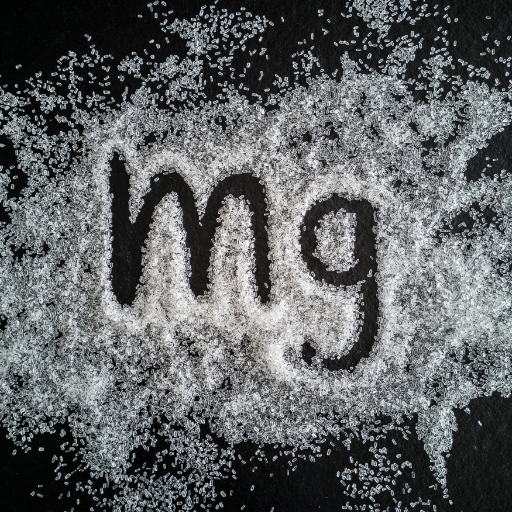
Epsom salt has many advantages in plants, mainly due to its magnesium and sulfur content. Magnesium is a necessary part of chlorophyll that intensifies photosynthesis and promotes luxuriant green growth. Sulfur facilitates the production of essential enzymes and amino acids. Epsom salt can solve magnesium deficiencies and improve seed germination by increasing nutrient uptake efficiency. Some particular species of flowers can develop their productivity, thereby supporting strong and healthy plants.
What does Epsom salt do for plant growth?
Magnesium (Mg) is responsible for making up the matter of chlorophyll and through this it participates in photosynthesis which enables the plant to convert sunlight into energy. All green plants need this process for them to thrive well in different environments thus enabling them to grow better. The optimum magnesium concentration for most plants would therefore be around 0.5-1% dry-weight basis per plant. On the other hand, sulfur (S) forms part of some vitamins, as well as coenzymes and certain secondary compounds responsible for plant defense. When diluted at a recommended ratio of one tablespoon per gallon water, Epsom Salt forms an easily absorbable source of such nutrients when mixed with water This solution may be sprayed on leaves or applied directly on soil; ensures that these elements are made available to roots or leaves of a plant respectively. Empirical studies have shown that adequate levels of magnesium in soil correlate positively with increased growth rates and yields, validating its use as an effective supplement in gardening.
Which are the main nutrients supplied by Epsom salt?
Basically epsom salts provide two vital macros-nutrients: magnesium (Mg) and sulfur (S). Magnesium’s presence at less than 1% dry weight ensures efficient chlorophyll synthesis leading robust development (De Camargo et al., 2016). In addition, there is sulphur, which mainly combines forming various proteins and amino acids. Other vitamins and secondary metabolites related to plant defense mechanisms also contain sulphur. A recommended dilution ratio is 1 tablespoon per gallon, which ensures that plants readily take up the nutrient content in these components through foliar application or soil drench. This enables a considerable increase in nutrient absorption, substantial growth rates, and better yield (Schonhof et al., 2007).
Can Epsom salt improve overall garden health?
It is true that epsom salt can improve overall garden health. Accordingly, its application corrects magnesium and sulfur deficiencies, encouraging stronger and greener growth and increased chlorophyll production. Such plants are healthier having better nutrient absorption as well as higher yields. Additionally, Epsom salt enhances other fertilizers’ effectiveness by aiding in nutrient intake thereby maintaining a healthy garden community with a wide range of organisms that are robust enough to withstand unfavourable environmental conditions.
How to Apply Epsom Salt on Plants?
First of all, you need to decide whether your plants will benefit more from foliar spray or soil drenching. For foliar application, add 1 gallon of water and 1 tablespoon of Epsom salt into a sprayer then spray directly on the leaves. This method permits rapid absorption through leaves, thus useful for correcting nutrient deficiencies quickly. Put one gallon of water and one tablespoon of Epsom salt in a bucket and mix well before applying it to the plant’s soil at its base. It ensures magnesium as well as sulfur is available through the root system which promotes overall healthiness. Best outcome is obtained by repeating this every 2-4 weeks during growing season. In order not to over-apply and cause a possible imbalance in nutrients always be cautious.
What is the right amount of Epsom salt?
The amount of Epsom Salt varies depending upon the type of plant and the method of application, such as horticultural practices.
- Vegetable Gardens: Apply about 1 tablespoon per foot tall as a soil drench or sprinkle around each plant at ground level. Reapply every 4-6 weeks throughout the growing season.
- Flower Gardens: Mix one gallon of water with one tablespoon full then pour it to flowers’ roots. Repeat after every month
- Houseplants: Dissolve two tablespoons of Epsom salts in one gallon of water and use this solution once monthly to water houseplants.
- Tomatoes & Peppers: Add 1 tbsp./gallon H20 applied via foliage or soak it into soil bi-weekly.
The guidelines have been recommended by horticulturists, and they conform to standard practices for correcting Mg/S deficiencies. They ensure a balanced nutrition supply and prevent deficiencies. Avoid over-fertilizing by monitoring how your plants respond and then adjusting accordingly.
How do you make foliar spray with Epsom salt?
Follow these steps to get a perfect foliar spray made from Epsom Salt:
- Items and Tools: Epsom salts, water, a spray bottle and a tablespoon.
- Solution Preparation: Dissolve 1 gallon of water with one tablespoonful of Epsom salt. Stir until it dissolves thoroughly into the solution.
- Application: Allow the mixture to sit in the spray bottle before applying it on leaves to ensure that both surfaces are uniformly wet. This method allows for rapid absorption through foliage.
- Frequency: For optimal results, use the foliar spray once every two weeks. Modify this frequency according to your plants’ specific requirements.
Can I put Epsom salt straight into soil?
Epsom salt can be supplied directly into plants through sandy soils. It is an option which nutritionists typically recommend in order to avail nutrients rapidly. The following are steps obtained from reputable sources:
- Application Rate: A simple rule of thumb is 1 tbsp per foot tall of the plant. Sprinkle it directly on the soil, then ensure thorough watering, which will help it dissolve and spread evenly throughout.
- Garden Beds: Work one cup of Epsom salts into the soil for each hundred square feet of garden bed before planting.
- Potted Plants: Add one to two teaspoons of Epsom salt to every gallon of soil. The concentration should be right for a lesser soil volume in pots.
- Frequency: Apply Epsom salt to the soil every 4-6 weeks during the growing season. Overuse may result in too much magnesium, therefore it is imperative that one monitors plant response.
Which Plants Benefit the Most from Epsom Salt?
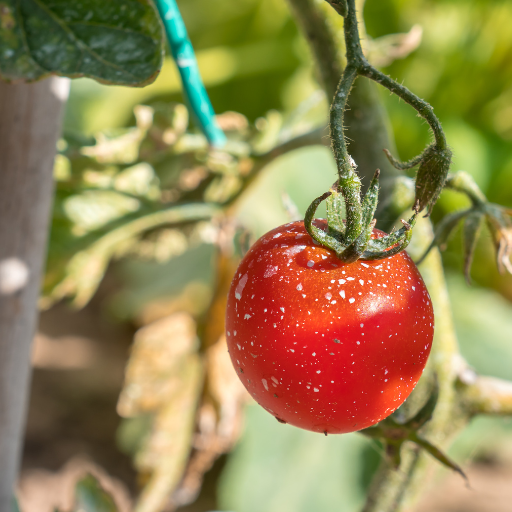
Numerous plants demonstrate significant improvements in growth and health when treated with Epsom salts, such as tomatoes, peppers, and roses. Tomatoes and peppers gain benefit from the extra magnesium that supports the production of chlorophyll essential for photosynthesis. On the other hand, sulfur, which is present in Epsom salt, is responsible for enhancing good leaves’ development, bright blooms, and robust root systems of roses. Moreover, Epsom salts can also assist to balance nutrient uptake in plants that are deficient in magnesia thus improving total plant fitness, yield and resistance to diseases.
Is Epsom salt good for tomato plants?
Primarily because of its magnesium sulfate content (essential for chlorophyll production) and general plant health, Epsom salt can be advantageous for tomato plants. Magnesium deficiency often leads to problems such as yellowing leaves or reduced tomato yields. By applying either directly to soil or through foliar spray applications by gardeners; this issue can be mitigated with the aid of Epsom salts so as to enable a strong vegetative growth. Generally, it is advised that 1 tablespoon of water containing dissolved 1 tablespoonful Epsom salt per foot height of a plant should applied, but one needs to take caution not to use excessive amounts that might cause an imbalance in nutrients when using them effectively. Nevertheless, it is important to observe young ones closely during their use so as not to suffer from nutrient imbalances, which may occur.
How does Epsom salt affect pepper plants?
Epsom salt positively impacts pepper plants since it provides vital magnesium these plants need plus sulphur. Magnesium enhances photosynthesis by promoting chlorophyll synthesis, thereby resulting in greener and healthier foliage, while Sulfur increases enzyme activities; thus, protein synthesis levels go higher. As a result, there will be increased flower bud formation and more fruits set on the stalks besides extra nutrients being taken up by these plants. The suggested amount of Epsom salt is generally 1 tablespoon per foot height of the plant which can either be broadcasted or dissolved in water to be foliar sprayed on the plants without any risk for nutrient imbalance.
Can Epsom salt help potted plants?
Yes, Epsom salt can help potted plants as it contains necessary nutrients, including magnesium and sulfur. These elements promote chlorophyll production thereby enhancing the ability of plants to take up phosphorus and nitrogen from the soil making their growth healthier and leaves brighter. For potted plants, dissolve 1 to 2 tablespoons of Epsom salts in a gallon of water and apply once every month for optimal nutrient absorption and overall plant health. But don’t forget that it is very important to manage one’s crop well so that there won’t be any symptoms connected with an excess use or lack of nutrients while working with such types.
How to Identify and Correct Magnesium Deficiency in Plants?
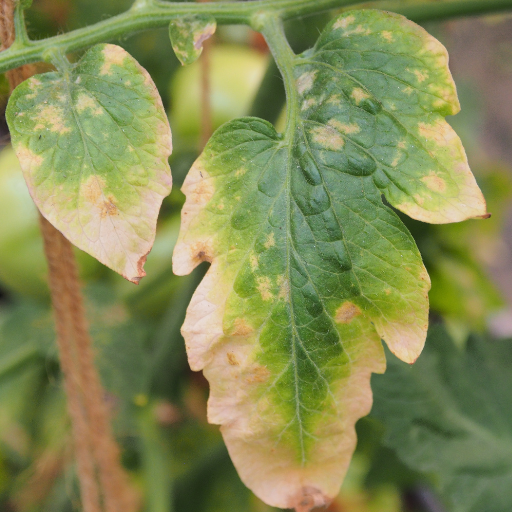
Magnesium lack in plants is commonly illustrated by interveinal chlorosis, where the leaf veins remain green and the interspaces turn yellow. This usually commences with older leaves because magnesium is a mobile element that will be translocated from older to younger tissues. Furthermore, affected crops may slow down their growth as well as reduce their yield. One can use Epsom salt (magnesium sulfate) as foliar sprays or soil amendment to rectify the magnesium shortage. For foliar spray, dilute 1 tablespoon of Epsom salts in 1 gallon of water and mist plants using the solution. In soil applications, mix 1 to 2 tablespoons of Epsom salts with soil around plant base and water thoroughly. Again monitoring pH and nutrient levels in soils regularly can help prevent such shortages happening again.
What are the signs of magnesium deficiency?
Indicate the symptoms of magnesium deficiency in plants as such:
- This is one of the most common symptoms where in-between parts turn yellow while the leaf veins remain green.
- Advanced stages of deficiency may result in necrotic spots or leaf tissue death, particularly affecting older leaves first.
- Curling Leaves: These leaves may start curling or puckering indicating a distinct change in their normal shape.
- Affected plants often exhibit stunted growth and have reduced overall vigour.
- Plants suffering from magnesium deficiency might experience leaves falling off sooner than expected.
- Fruit or flower production may be significantly reduced in plants which do not get enough magnesium.
Technical Parameters and Justification
- Magnesium is a central component of chlorophyll so that its shortage causes lessening between veins being yellowed.
- Optimal uptake of magnesium occurs at pH ranges between 6.0 to 7.0. Low acidic soils (pH < 5.5) generally worsen magnesium deficient soils.
- Ideally, soil should contain 50-120 ppm (parts per million) of magnesium for adequate plant health.
Prompt diagnosis and treatment of this issue are crucial to ensure plant health and productivity. Regular soil testing and proper fertilization can help avoid recurrences of this problem.
How can Epsom salt remedy magnesium deficiency?
Epsom salt, chemically known as Magnesium Sulphate (MgSO₄), is an effective solution for treating Magnesium deficiency in plants. It provides a soluble form of Magnesium and Sulfur when applied which the plants can easily take up Here are technical parameters and justifications on how to use Epsom salt:
- Formulation
- Chemical Composition: Magnesium sulfate (MgSO₄) comprises magnesia, sulfate, and oxygen
- Dosage: Typically, Epsom salt contains about 10% magnesium by weight; sulfur comprises about 13% by weight.
- Application Techniques
- Soil Application: Take a tablespoonful of Epsom salt and dissolve it in one gallon of water then apply to the soil directly at the base of plants. This method ensures that magnesium is taken up through roots.
- Foliar Spray: Mix a tablespoonful of Epsom salt with a gallon of water then spray the solution on the leaves. It allows for immediate uptake across leaf surface thus alleviating deficiency symptoms quickly.
- Advantages
- Immediate Availability: Magnesium becomes available to plants more quickly than from some slow-release fertilizers due to high solubility of Epsom salts.
- pH Neutrality: The pH value remains unaffected because Epsom salts do not significantly affect the acid content, giving other nutrient absorption processes favorable conditions.
- Enhancement of Chlorophyll Production: In as much as magnesium is part and parcel of chlorophyll, applying Epsom salt helps restore chlorophyll supply thereby ameliorating interveinal chlorosis and enhancing general leaf coloration.
Using this strategy, gardeners could eradicate magnesium deficiency faster, which would finally lead to healthier plant growth and increased yield. Appropriate application methods and regular testing can help avoid such insufficiencies in the future while keeping plants at their highest quality.
What Are the Common Mistakes When Using Epsom Salt on Plants?
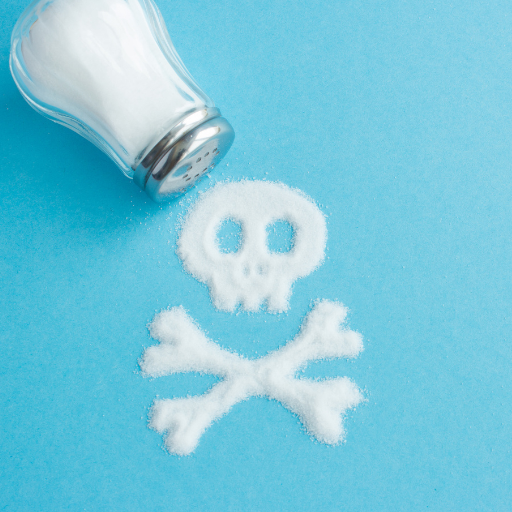
- Overapplication: One of the most common mistakes is applying too much Epsom salt. Excessive magnesium can cause imbalances in the soil, leading to nutrient lockout and deficiencies in calcium and potassium.
- Ignoring Soil Testing: It’s difficult to know if magnesium deficiency is the issue without a soil test. Applying Epsom salt without confirming a deficiency can disrupt overall soil nutrient balance.
- Incorrect Timing: Timing of application is crucial. Misapplication, such as during periods of dormancy or stress, can hinder rather than help plant health.
- Inappropriate Use on Non-Magnesium Deficient Soils: Using Epsom salt indiscriminately on soils that are not magnesium-deficient can lead to an unnecessary buildup of magnesium, adversely affecting plant growth and soil health.
- Not Considering Plant Type: Certain plants may not respond well to magnesium sulfate. Understanding the specific needs of each plant type is essential for effective application.
Can an overdose of Epsom salt harm plants?
Yes, using too much Epsom salt can indeed be harmful to plants. The application of excess amounts of magnesium sulfate (Epsom salt) causes nutrient imbalances in the soil. High levels of magnesium impede the uptake of essential nutrients like calcium and potassium leading to deficiency symptoms such as poor root development, slow growth rate, and weak plant structure. Application rates recommended by horticultural sources vary, but according to common guidelines, under no circumstances should more than 1-2 tablespoons per gallon of water for use as a foliar spray or a light dusting on the ground around the base of the plants not exceeding 1 cup per 100 square feet. Applying excessive amounts beyond these set parameters may result in toxicity, which interferes with the delicate nutrient equilibrium in order to keep optimal plant health.
Which plants are affected negatively by this substance?
Lavender: Lavender grows well in alkaline soils and may not always need extra magnesium supply. A high concentration of magnesium from Epsom salts, therefore, affects pH, leading to stunted growth and hindered production of essential oils.
Sage: Being a member of the Labiate family, Sage doesn’t require extra magnesium supplementation, either. Overusing Epsom salt will lead to nutrient imbalance, resulting in reduced aroma and weakening the plant in general.
Chamomile: Thrives best in moderately fertile soil with a slightly acidic to neutral pH level. The addition of Epsom salt brings about an unneeded addition of magnesium, which possibly hinders the intake of other important minerals.
Thyme: Thyme normally does better on well-drained slightly alkaline soils without requiring an additional dose of magnesia. Using Epsom salts thus provides excess magnesia, which disturbs its nutrient equilibrium and, thus, affects its health.
Beans: Nitrogen-fixing bacteria that have a symbiotic relationship with leguminous plants, such as beans, do not generally need more Mg. However, overuse of Epsom salts may inhibit nitrogen fixation in beans, reducing the growth and yield per plant.
These plants have neutral or negative responses to additional magnesium from Epsom salts based on several horticultural studies, indicating the importance of understanding the individual nutrient requirements of these plants.
How often should I apply Epsom salt?
The frequency with which you use it depends on what particular plant needs and the general condition of your soil. For most garden plants, an application once a month can be done using a foliar spray with a solution containing 1 tablespoonful of Epsom salt diluted in a gallon of water. Potted plants can be treated using the same ratio and schedule every four to six weeks. Overdoing it could disrupt nutrient balance through excess magnesium, leading to damage. Always ensure that you conduct soil testing for accurate magnesium levels prior to initiating regular treatments with Epsom salts.
Can Epsom Salt Be Combined with Other Fertilizers?
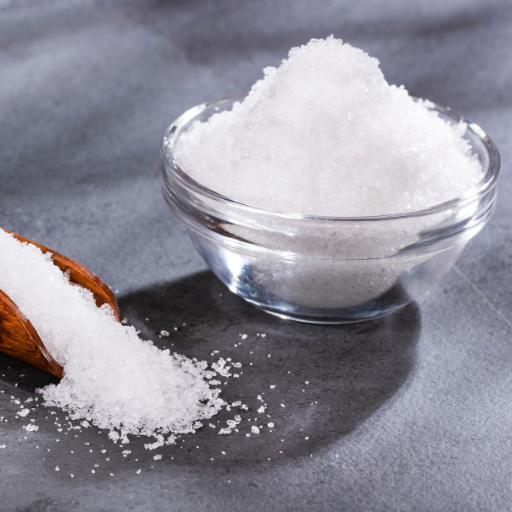
Caution must be exercised while combining Epsom salt with other fertilizers. This means that it is not a complete fertilizer because, according to horticultural experts, despite its ability to supplement magnesium and sulfate levels in the soil. It doesn’t have nitrogen, phosphorus, or potassium because it lacks the vital nutrient elements of those nutrients, which is why it’s often used with well-balanced fertilizers. Nutrient lockout or toxicity can occur when these substances are improperly mixed together however. For instance, Epsom salt combines well with well-balanced slow-release fertilizers as stated in Integrated Pest Management (IPM) websites without giving an excess of any single nutrient. To ensure a plant gets the optimum amount of nutrients, always carry out soil tests before applying specific products.
Is it advisable to mix Epsom salt with other fertilizers?
Yes, you can mix Epsom Salt with other fertilizers but you should do this wisely. The effective combination of Epsom salt with other fertilizers helps increase plant growth by providing essential magnesium and sulfate ions lacking in standard fertilizers. However, excessive application should be avoided because too much magnesium may block calcium and potassium absorption in plants, thus preventing proper growth among others, as advised by some sources, since excessive amounts may limit the uptake of other critical nutrients such as calcium and potassium by plants. Before adding Epsom salt to the soil it is important to read specific instructions provided by manufactures and perform soil testing so as to avoid nutrient imbalances and toxicities that may arise when one applies Epsom salt wrongly. Prudent use of Epsom salts alongside normal horticultural guidelines is what will lead to safe results.
How do I balance Epsom Salts with other nutrients?
A strategic approach is required for balancing Epsom salts with any other nutrient, hence avoiding any circumstances that would lead to nutrient lockout within a particular ecological system where a farmer has planted his or her crops. For instance, it is crucial to conduct soil testing so as to know the amount of nutrients that are already present in a given land. According to major horticultural sources, an ideal application rate is generally about 1 tablespoon of Epsom salt per gallon of water, used as a foliar spray or soil drench, typically every 1-4 weeks during the growing season.
This should be done according to precise guidelines for combining Epsom salts with balanced slow release fertilizers so that there can be no excessive accumulation of magnesium within the soil. Technical parameters that one needs to consider include ensuring pH levels in soils range between 6.0 and 7.0 since this greatly influences plant nutrient availability. Additionally, sufficient amounts of calcium (50-70 % CEC) and potassium (2-5% CEC) must be maintained because these nutrients are often obstructed by high magnesium levels.
For example, the University of Minnesota Extension suggests mixing one tablespoon of Epsom salt at each foot level well into the soil to ensure a uniform distribution of nutrients. Following these guidelines while performing regular soil tests will help maintain an optimal nutrient balance.
What effect does Epsom Salt have on Soil pH?
Epsom salt, which is basically composed of magnesium sulphate, hardly changes your soil’s acidity level or alkalinity. According to major online horticulture resources, magnesium sulphate has little effect on soil acidity/alkalinity. It is normally applied when correcting mineral deficiencies such as Mg and S rather than altering the pH level.
- Chemical Composition: In other words, Epsom salt contains neither acidic nor basic ions that can significantly change its pH value since it consists only MgSO₄·7H₂O.
- Solubility: Whenever water dissolves Epsom salt, it has a high solubility, leading to its rapid dissociation in soil moisture to release magnesium and sulfate ions without changing the pH of the soil.
- Soil Buffering Capacity: Good soils buffering capacity allows minor changes in pH caused by external additions.
Frequently Asked Questions (FAQs)
Q: How do I use Epsom salt in the garden?
A: To use Epsom salt in gardening, dissolve one tablespoon of Epsom salt in a gallon of water and apply this solution to your garden soil. This can help plants grow bushier and more robust by supplying essential magnesium.
Q: Can I use Epsom salt for plants like tomatoes?
A: Yes, using Epsom salt for plants like tomatoes can be beneficial. Add a tablespoon of Epsom salt to each planting hole before seeding or transplanting. This could help boost the magnesium levels in the soil, which tomatoes often require for optimal growth.
Q: How often should I add Epsom salt to plants?
A: It is generally recommended to add two tablespoons of Epsom salt per nine square feet of garden soil every two to four weeks. This helps maintain a consistent level of magnesium, which is essential for healthy plant growth.
Q: Does Epsom salt kill weeds?
A: Epsom salt is not typically used to kill weeds. While it contains magnesium beneficial for plants, it does not have properties that would harm or eliminate weeds.
Q: What are the benefits of using Epsom salt in the garden?
A: The main benefits of using Epsom salt in gardening include improved magnesium and sulfate levels in the soil, helping plants grow bushier, and enhancing the overall health and yield of plants. It can be particularly beneficial for vegetables such as tomatoes and peppers.
Q: How do I sprinkle Epsom salt to plants?
A: To sprinkle Epsom salt to plants, simply add one to two tablespoons of Epsom salt to the base of each plant, lightly mixing it with the soil. Water thoroughly afterward to help it dissolve and get absorbed by the roots.
Q: Can I use Epsom salt to treat yellowing leaves?
A: Yes, yellowing leaves may indicate a magnesium deficiency, and using Epsom salt can help. Dissolve one tablespoon of Epsom salt in a gallon of water and apply to the affected plants every two weeks until their condition improves.
Q: Are there any plants that do not benefit from Epsom salt?
A: While many plants may benefit from Epsom salt, some might not respond to it due to different nutrient requirements. Always conduct a soil test or consult resources like the National Gardening Association to ensure appropriate use.
Q: Does Epsom salt contain any other nutrients besides magnesium?
A: Epsom salts do not contain any other nutrients besides magnesium and sulfate. It is not a complete fertilizer and should be part of a balanced nutrient regimen tailored to what your plants need.
Q: How do I learn when to use Epsom salt for plants?
A: Observing your plants and conducting soil tests can help you learn when to use Epsom salt. Signs like yellowing leaves and stunted growth can indicate magnesium deficiency. Additionally, consulting gardening resources and organizations like the National Gardening Association can provide guidance.






